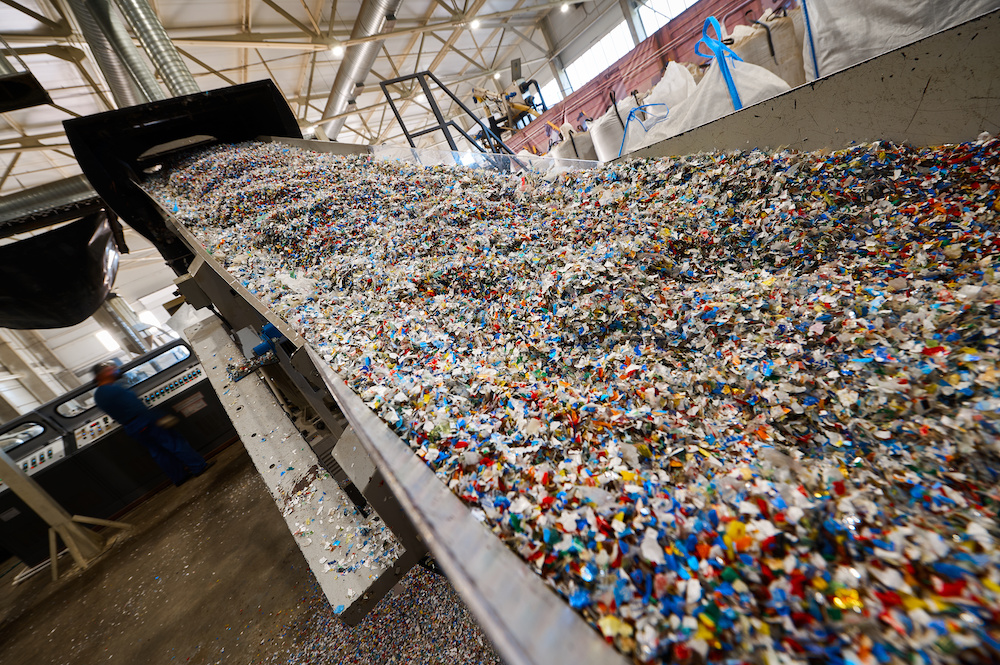A popular method for achieving efficiency and reducing waste in plastic injection molding is the use of regrind. Below, we explore the plastic regrind process, its benefits, and important considerations to using these recycled materials.
What is Regrind?
Regrind typically refers to the practice of recycling plastic waste generated from previous molding cycles. Excess or defective plastic parts are collected and repurposed rather than discarded during production. This waste is ground into small particles, known as regrind, which can then be used again by mixing with virgin plastic to produce new parts.
This recycling process improves material efficiency and supports environmental sustainability.
The Regrind Process
Collection of Scrap Material
The regrind process begins with the collection of scrap material from molding operations. This includes plastic parts that are surplus or those that fail to meet quality standards, as well as runner systems and material purged from the injection molding barrel during setup operations. Efficient collection and storage are vital to ensure that these materials are kept in good condition until they can be recycled. Proper handling minimizes contamination and preserves the quality of the regrind.
Plastic Grinding
Once collected, the plastic scrap is processed through a grinding machine. This equipment breaks down the scrap into smaller, uniform particles. The regrind particles must be of consistent size with the virgin plastic pellets to ensure proper blending and consistent processing performance. The ground material is then prepared for further quality control and mixing.
Quality Control
Before regrind is reused, it must undergo stringent quality control checks. These checks are designed to identify and eliminate impurities that could affect the quality of the final product, including reduced material performance or cosmetic issues. Consistency in particle size and composition is monitored to ensure that the regrind meets the required specifications.
Mixing with Virgin Material
Since material properties of plastic are altered as a result of the heating and molding cycle, the regrind material is usually mixed with virgin plastic. This blending helps maintain the quality and consistency of the final molded parts by improving the material properties of the hybrid material as compared to regrind material alone. The ratio of regrind to virgin plastic can vary depending on the product’s specific requirements, but is typically on the order of 25%. By carefully controlling this ratio, manufacturers can optimize the performance and cost-effectiveness of the molding processes.
Adjustments in Processing Parameters
Incorporating regrind into the molding process often requires adjustments in processing parameters. These adjustments can include changes to temperature, pressure, and injection speed to accommodate the regrind’s characteristics. Due to the variability in material properties that regrind can create, these parameters can vary each time a new material lot is processed. Proper calibration ensures that the regrind blends seamlessly with the virgin plastic and that the final product meets all performance standards.
Benefits of Using Plastic Regrind
Reduced Material Costs
One of the most significant advantages of using regrind is the reduction in material costs. Regrind is generally less expensive than virgin plastic, reducing material expenses. This cost-saving benefit can substantially impact the overall profitability of manufacturing operations.
Environmental Benefits
Regrind also offers substantial environmental benefits. By recycling plastic, material waste can be reduced, conserving natural resources and reducing the need for new raw materials.
Considerations and Limitations
Quality Concerns
Regrind material properties will not always match the properties of virgin plastic, which can impact the mechanical characteristics of the final product, affecting strength, flexibility, and appearance. Therefore, thorough quality checks must be conducted and appropriate applications for the regrind considered.
Additionally, materials that include regrind are more difficult and inconsistent to process in the molding press as compared to virgin materials. Molders that use materials with regrind must account for these variations and have the expertise to adjust for the variability in molding parameters.
Best Use Cases
Regrind is best suited for applications where minor variations in material properties and material impurities are acceptable. Examples include non-critical components or parts used in less demanding environments, such as decorative products or parts that will not bear loads during use. By selecting the right applications, the benefits of regrind can be exploited while mitigating potential drawbacks.
Discover How Regrind Can Transform Your Molding Process
Regrind in plastic injection molding presents an excellent opportunity for cost savings and environmental sustainability. By understanding the regrind process, its benefits, and its limitations, incorporating regrind into plastic components can be seriously considered for many applications. To mitigate concerns about using regrind, consider making a prototype mold at Protoshop, molding parts with these eco-friendly materials, and testing them!
Contact Protoshop Inc. today to learn more about how using regrind can support your sustainability goals. Our team of experts is ready to assist you with all your rapid prototype injection molding needs and help you optimize your material usage for maximum efficiency and cost-effectiveness.


